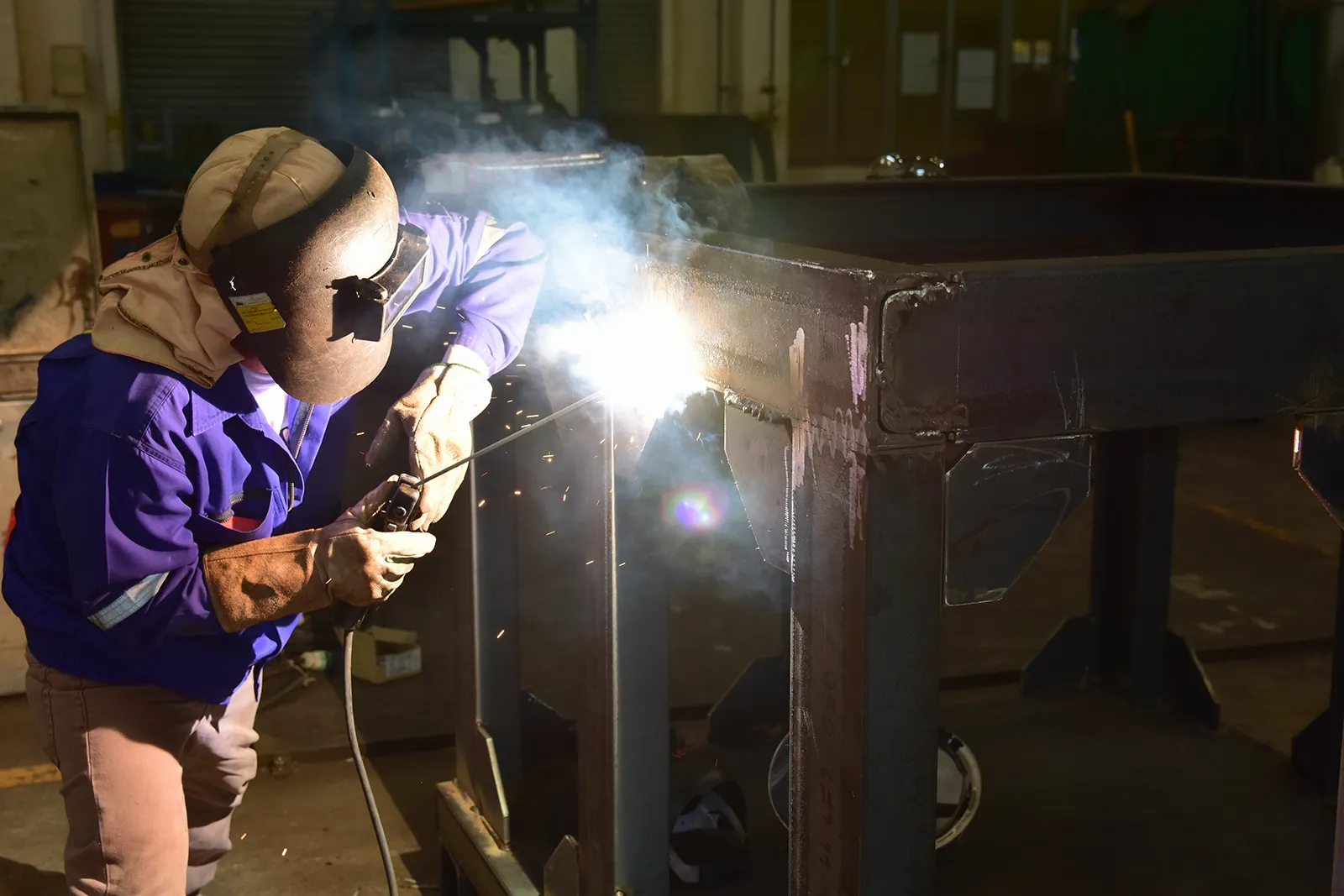Welding is a critical process in manufacturing and construction, but it comes with its share of challenges. This article explores the most common welding problems encountered and provides practical solutions to overcome them, ensuring quality welds and efficient operations.
1. Porosity
Problem: Porosity in welds appears as tiny holes or cavities caused by trapped gas bubbles in the molten metal. It weakens the weld, making it susceptible to cracking and corrosion.
Řešení:
- Clean Base Metal: Ensure the base metal is clean and free of contaminants like oil, rust, and moisture before welding.
- Proper Shielding: Use appropriate shielding gases (e.g., argon, CO2) and maintain correct flow rates to protect the weld pool from atmospheric gases.
- Electrode Storage: Store electrodes in a dry environment to prevent absorption of moisture, which can lead to hydrogen-induced porosity.
2. Cracking
Problem: Cracks can occur during welding due to high levels of residual stress, rapid cooling rates, or improper joint design.
Řešení:
- Předehřev a tepelné zpracování po svařování (PWHT): Preheating the base metal and applying controlled heating or annealing post-welding reduces stress and minimizes cracking.
- Proper Weld Design: Ensure joints are designed with appropriate dimensions and welding techniques to distribute stress evenly.
- Výběr materiálu: Use filler metals and base metals compatible in composition and mechanical properties to reduce susceptibility to cracking.
3. Lack of Fusion or Incomplete Penetration
Problem: Insufficient fusion or penetration results in weak weld joints, compromising structural integrity.
Řešení:
- Proper Welding Technique: Maintain correct arc length, travel speed, and electrode angle to achieve adequate fusion and penetration.
- Joint Preparation: Ensure edges are properly beveled and cleaned to allow sufficient weld penetration.
- Amperage Adjustment: Adjust welding parameters, such as amperage and voltage, to match the thickness and type of material being welded.
4. Weld Spatter
Problem: Weld spatter consists of unwanted bits of molten metal that can adhere to surrounding surfaces, leading to additional cleanup and potential contamination.
Řešení:
- Correct Voltage and Wire Feed Speed: Adjust welding parameters to minimize spatter formation. Use lower voltages and appropriate wire feed speeds.
- Anti-Spatter Solutions: Apply anti-spatter sprays or gels to surfaces near the weld area to prevent spatter adhesion.
- Maintain Equipment: Regularly clean and maintain welding equipment, including nozzles, tips, and liners, to reduce spatter generation.
5. Distortion
Problem: Weld-induced distortion alters the shape and dimensions of welded components, affecting fit-up and alignment.
Řešení:
- Fixturing and Clamping: Use fixtures and clamps to secure workpieces in place and minimize movement during welding.
- Sequential Welding: Employ a welding sequence that balances thermal contraction to minimize distortion.
- Zpětné čištění: In applications where distortion is critical, use back purging techniques to maintain uniform cooling rates and reduce warping.
Závěr
Addressing common welding issues requires a combination of technical expertise, meticulous preparation, and adherence to best practices. By understanding the root causes of problems like porosity, cracking, lack of fusion, spatter, and distortion, welders can implement effective solutions to achieve high-quality welds and optimize production efficiency. Continuous training, equipment maintenance, and proper material handling are essential for mitigating welding challenges and ensuring consistent, reliable results. Embracing these solutions not only enhances weld quality but also contributes to overall operational efficiency and customer satisfaction in various industrial sectors.

